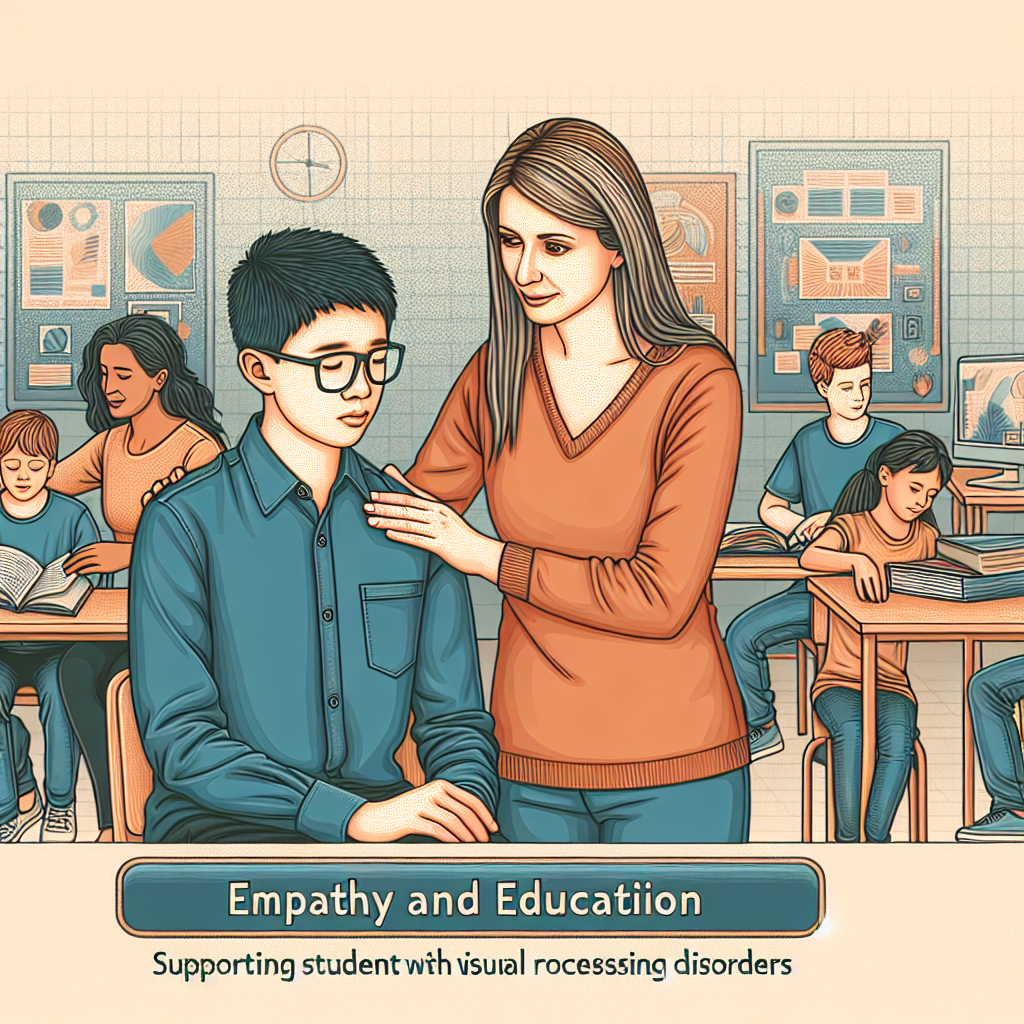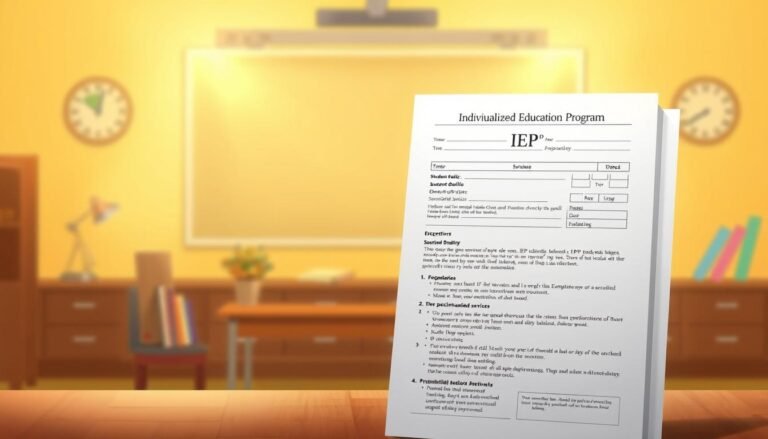
Empathy and Education: Supporting Students with Visual Processing Disorders – The Essential Guide
Introduction
In a world where emotional intelligence is becoming increasingly important, the role of empathy in education cannot be overstated. Specifically, when it comes to students with visual processing disorders (VPD), empathy can transform their learning experience. Imagine a child who struggles to recognize letters or interpret charts, feeling isolated and frustrated in a classroom setting. This is the reality for many students with VPD. As educators, parents, and peers, it is our responsibility to foster an environment that resonates with understanding and support. This article delves into the intersection of empathy and education, focusing on how we can better support students facing these challenges.
Understanding Visual Processing Disorders
What Are Visual Processing Disorders?
Visual processing disorders refer to a range of conditions that affect how the brain interprets visual information. These disorders can manifest in several ways, including difficulties in recognizing shapes, letters, and numbers, as well as challenges in spatial awareness and depth perception. This is not a reflection of a child’s intelligence but rather the brain’s unique way of processing visual information.
The Impact of Visual Processing Disorders on Learning
Students with VPD often experience significant hurdles in academic settings. Traditional teaching methods may not resonate with them, leading to misunderstandings and feelings of inadequacy. These challenges can also lead to behavioral issues, social withdrawal, and anxiety, further complicating their educational journey.
Key Statistics on Visual Processing Disorders
| Statistic | Value |
|---|---|
| Prevalence of VPD in students | Approximately 5-10% |
| Percentage of students struggling with reading | 70% of those with VPD |
| Correlation with other learning disorders | 30-50% overlap with ADHD and dyslexia |
The Role of Empathy in Education
Empathy goes beyond mere sympathy; it involves understanding and sharing the feelings of others. In the context of education, empathy encourages teachers and peers to recognize the individual needs of students and adapt their approaches accordingly.
Why Empathy Matters for Students with VPD
Empathy can be a transformative force for students with VPD. When educators demonstrate understanding, they not only validate the struggles of these students but also create a supportive learning environment. This fosters resilience and encourages students to engage with their education meaningfully.
Real-World Applications of Empathy in Supporting Students with VPD
Case Study 1: The Classroom of Mrs. Thompson
Background
Mrs. Thompson teaches a diverse second-grade class, including a child named Alex who has a visual processing disorder. Recognizing Alex’s struggles early on, Mrs. Thompson made it her mission to incorporate empathy into her teaching.
Approach
Tailored Learning Materials: She provided Alex with colored overlays for reading assignments, helping him differentiate between letters more effectively.
- Peer Buddy System: Mrs. Thompson paired Alex with a compassionate classmate who assisted him during group activities, fostering a sense of belonging.
Analysis
By understanding Alex’s needs and adapting her teaching methods, Mrs. Thompson exemplifies how empathy and education can work hand-in-hand, helping her student flourish academically and socially.
Case Study 2: Implementing Technology in a Middle School
Background
A middle school identified a group of students with VPD and sought innovative methods to support them. The school implemented assistive technology like text-to-speech software and digital organizational tools.
Approach
Training for Educators: Teachers were trained in the use of these technologies and how to integrate them into their lessons, emphasizing empathy.
- Student Workshops: Students participated in workshops to help them understand their own learning styles and the tools available to support them.
Analysis
This initiative demonstrates how empathy can transcend individual connections, creating an inclusive educational framework that benefits all students, not just those with VPD.
Techniques for Fostering Empathy in the Classroom
1. Open Communication
Encourage dialogue about challenges and feelings within the classroom. Make it a safe space where students feel comfortable expressing their needs without fear of judgment.
2. Promote Peer Support
Foster a culture of understanding among peers through group activities and collaborative learning, emphasizing the importance of helping one another.
3. Incorporate Flexible Teaching Strategies
Utilize various teaching methods to cater to different learning styles. This not only supports students with VPD but enhances the overall learning experience for everyone.
4. Professional Development
Invest in training for educators focused on empathy, recognizing learning disorders, and managing a diverse classroom effectively.
5. Utilize Parental Engagement
Encourage parents to share their insights about their child’s learning styles and challenges. This collaboration strengthens the support system for the student.
6. Adapt Learning Environments
Create a classroom setup that minimizes distractions and allows for personalized learning experiences, such as quiet zones or accessible learning tools.
Summary of Key Points
Empathy and education are vital components in supporting students with visual processing disorders. Through tailored strategies, open communication, and the incorporation of technology, we can create inclusive environments that recognize and celebrate individual differences. By embracing empathy, we empower not only students with VPD but the entire classroom community, fostering a culture of understanding and support.
Actionable Insights
Awareness: Make it a priority to educate not only teachers but also the student body about visual processing disorders and their implications.
Resource Allocation: Invest in tools and training that can foster empathy and effective teaching strategies tailored for students with VPD.
Community Building: Develop programs that connect parents, students, and educators to share experiences and resources.
- Feedback Mechanisms: Establish avenues for students to express their educational needs and experiences, ensuring their voices are heard.
FAQs
1. What are the signs of Visual Processing Disorder?
Common signs include difficulty recognizing shapes or letters, problems with reading comprehension, and challenges in following visual cues in the classroom.
2. How can I support a child with VPD at home?
Create a conducive environment for learning by minimizing distractions. Use visual aids and color codes to help them better understand materials.
3. Are there specific teaching methods effective for students with VPD?
Yes, multi-sensory instruction, visual aids, and assistive technology can significantly aid their learning.
4. How do I work with schools to ensure my child’s needs are met?
Open a line of communication with teachers and administrators. Share your child’s challenges and advocate for necessary accommodations.
5. Are there resources available for educators?
Many organizations provide training and resources designed specifically for educators to support students with Visual Processing Disorders.
6. How can peers be more supportive?
Encourage peer awareness programs in classrooms that focus on understanding differences and fostering a collaborative environment.
Conclusion
Empathy and education: supporting students with visual processing disorders is not just an imperative—it’s a necessity. As we understand the unique challenges faced by these students, we must commit to creating supportive, empathetic learning environments. By making small but impactful changes, we can help students with VPD not just to survive in the educational system, but to thrive. Let’s embrace this journey together, cultivating empathy and unlocking the potential of every learner.
















